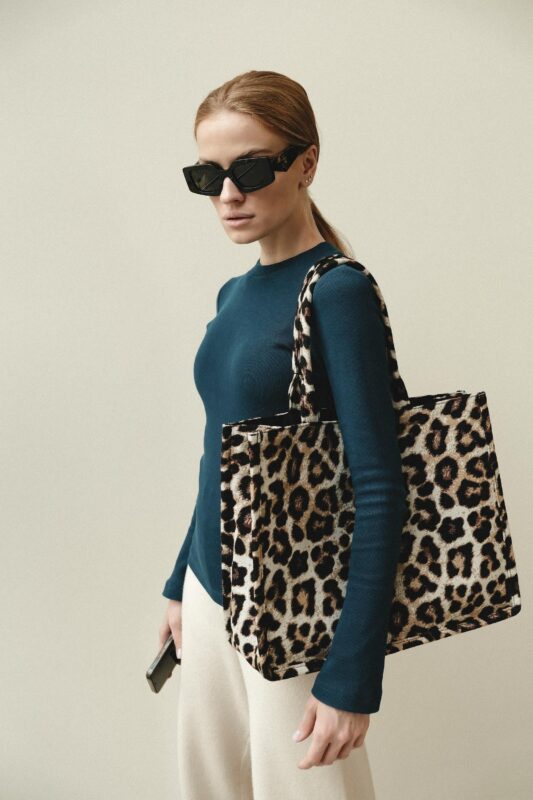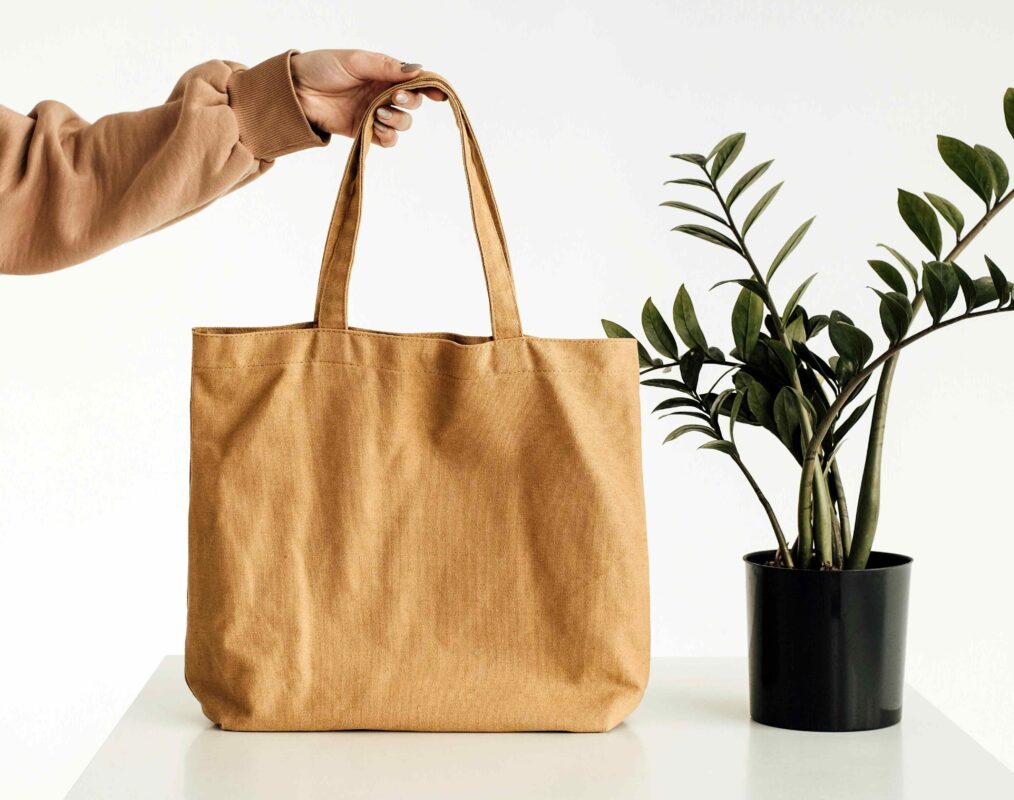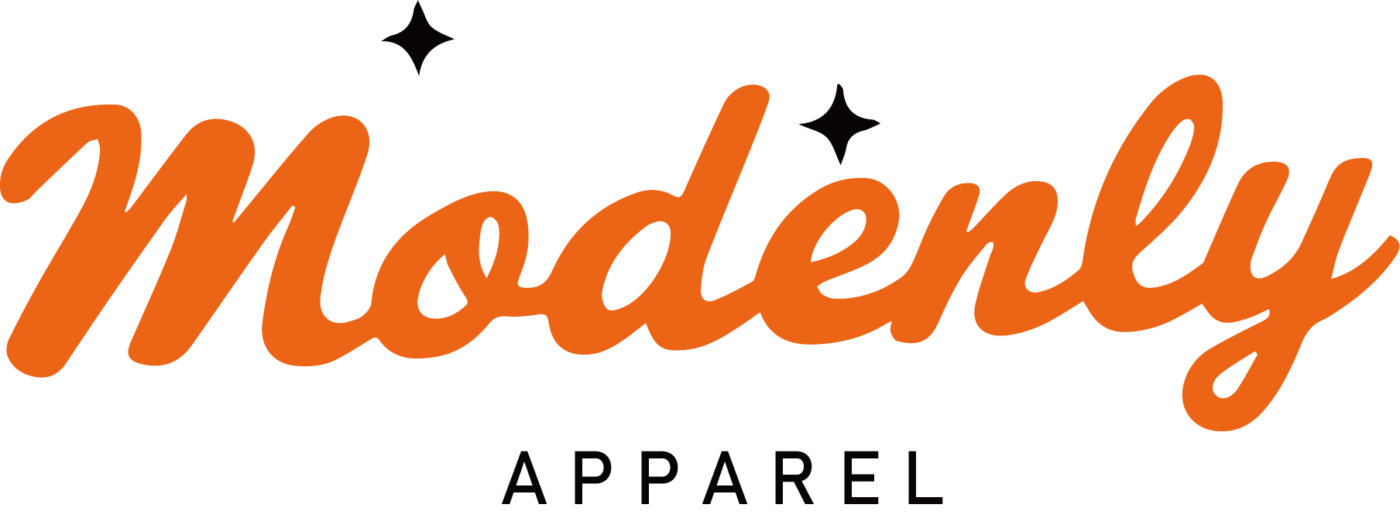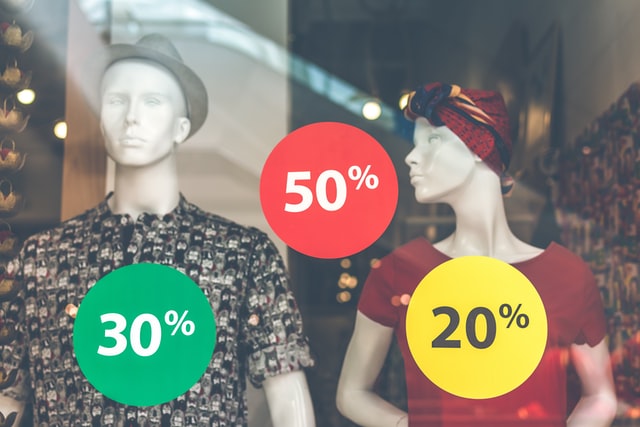Unternehmen sind ständig auf der Suche nach Marketinglösungen, die in einem Markt, der von digitaler Werbung und Einwegkampagnen überschwemmt wird, einen echten, dauerhaften Eindruck hinterlassen. Individuell gestaltete Tragetaschen sind eine großartige Option für Bekleidungsgroßhändler, Wiederverkäufer und Firmenkunden, da sie eine besondere Mischung aus Nutzwert und Markenbekanntheit bieten. Diese Taschen, die die Botschaft Ihres Unternehmens überall zeigen, sind mehr als nur ein einfacher Geschenkartikel. Sie sind mobile Werbeträger.
Individuell gestaltete Tragetaschen sind umweltfreundlich, anpassungsfähig im Design und sehr nützlich für den täglichen Bedarf von B2B-Unternehmen, die bestehende Allianzen vertiefen oder neue Möglichkeiten erschließen wollen. Die Verwendung von Slogans oder Markenlogos hilft Unternehmen, eine einzigartige Identität zu schaffen. Gut gemachte Tragetaschen sind ein Markenverstärker und ein Gesprächsanlass, ob im Alltag, auf Messen oder bei Geschäftstreffen.

Dieser Artikel befasst sich mit den Vorteilen, Materialien, Kostenfragen und Designtechniken und zeigt auf, wie personalisierte Tragetaschen das Branding von B2B-Unternehmen verbessern können. Wenn Sie Kleidung vertreiben oder weiterverkaufen, werden Ihnen diese Ideen helfen, eine Reihe von Kunden zufrieden zu stellen, die sich Wirkung, Stil und Nachhaltigkeit wünschen. Am Ende werden Sie einen besseren Fahrplan für die Auswahl und Herstellung einzigartiger Tragetaschen haben, die den Endverbraucher ansprechen und die Markentreue fördern.
Warum kundenspezifische Tragetaschen ein wichtiges Asset für B2B Branding sind
Konkretes Marketing in einer digitalen Welt
Obwohl maßgeschneiderte Tragetaschen bei B2B-Veranstaltungen sehr attraktiv sind, haben haptische Produkte immer noch einen großen Wert, auch wenn Online-Marketing der Standard ist. In der Flut der Online-Werbung heben sich physische Produkte ab, da sie ein einzigartiges, praktisches Erlebnis bieten. Sowohl potenzielle als auch bestehende Kunden erinnern sich eher an ein Unternehmen, das eine praktische, wiederverwendbare Tasche anbietet, als an eines, das lediglich LinkedIn-Nachrichten oder digitale Newsletter verschickt.
Tägliche Sichtbarkeit für langfristigen Rückruf
Obwohl Markenartikel in der Regel darauf abzielen, den Wiedererkennungswert zu steigern, verschwinden bestimmte Produkte - wie Kugelschreiber oder Broschüren - oft schnell. Tragetaschen hingegen werden häufig und wiederholt verwendet - für Einkäufe, Reisen oder einfach nur für den Papierkram. Jedes Mal, wenn diese Taschen in der Öffentlichkeit auftauchen, heben sie die darauf abgebildete Marke unauffällig hervor und erhöhen so die Marketingreichweite. Jedes neue Paar Blicke verwandelt sich in mögliche Leads für geschäftsorientierte Kleidung.
Kosteneffizienz und hoher ROI
Vor allem bei der Verwendung von relativ billigen Stoffen können Tragetaschen in großem Maßstab recht wirtschaftlich hergestellt werden. Ihre Fähigkeit zur kontinuierlichen Nutzung in Verbindung mit ihren niedrigen Stückkosten garantiert eine gute Kapitalrendite (ROI). Eine gut gefertigte Tasche kann über Monate, ja sogar Jahre im Umlauf sein und so über einen wesentlich längeren Zeitraum Markeneindrücke vermitteln als herkömmliche kurzfristige Anzeigen oder Flugblätter.
Stärkung der Geschäftsbeziehungen
Die Bereitstellung von personalisierten Tragetaschen als Teil eines Unternehmensgeschenkprogramms trägt zur Stärkung der Beziehungen zu wichtigen Kunden und Ehepartnern bei. Das Verschenken von etwas Nützlichem spiegelt das Engagement des Schenkenden für kontinuierliche Teamarbeit wider und findet im geschäftlichen Umfeld Anklang. Hochwertige Tragetaschen vermitteln den Empfängern ein Gefühl der Wertschätzung und bringen Ihr Unternehmen mit Kompetenz und Zuverlässigkeit in Verbindung.
Kernmaterialien für hochwertige Tragetaschen
Baumwoll-Leinwand: Die klassische Wahl
Für viele Taschendesigns wird Baumwoll-Canvas verwendet, das für seine Strapazierfähigkeit, seine Umweltfreundlichkeit und seine Fähigkeit, Drucke oder Stickereien aufzunehmen, bekannt ist. Gemessen in Unzen pro Quadratyard (oz/yd²) sind schwerere Segeltücher stabiler. Übliche Gewichte liegen zwischen 6 Unzen (leicht) und 12 Unzen oder mehr für schwere Anwendungen.
Warum Baumwollgewebe?
- Natürliche Ästhetik, die auf umweltbewussten Märkten Anklang findet
- Atmungsaktiv, bequem zu tragen und mit moderatem Gewicht belastbar
- Druckfreundliche Oberfläche, die Siebdrucke, Digitaldrucke und sogar Direktstickereien unterstützt
Recycelte und organische Mischungen
Biologische oder recycelte Materialien bieten nachhaltige Alternativen, da die soziale Verantwortung der Unternehmen zunimmt. Recycelte Baumwolle beispielsweise reduziert den Abfall durch die Wiederverwendung von Fasern, während Bio-Baumwolle frei von zerstörerischen Pestiziden wächst.
Vorteile von umweltfreundlichen Stoffen:
- Verbessert das Markenimage als umweltbewusst
- Potenziell qualifiziert für Zertifizierungen (z. B. GOTS für Bio-Baumwolle), die die Authentizität bestätigen
- Unterstützung der Kunden bei der Ausrichtung auf interne grüne Initiativen oder externe Nachhaltigkeitsziele
Vliesstoff Polypropylen
Polypropylen-Vliesstoff (PP) wird häufig für preiswerte Tragetaschen verwendet und hat eine gepresste, filzähnliche Textur. Obwohl es nicht so stark wie Baumwolle ist, ist es leicht und eignet sich gut für den Massenvertrieb oder zeitlich begrenzte Werbeaktionen.
Vor- und Nachteile:
- + Kostengünstig und leicht anpassbar
- + Wasserfest und leicht zu reinigen
- - Weniger hochwertiges Gefühl, nicht so lange haltbar wie Baumwolle
Polyester-Leinwand und Mischungen
Materialien auf Polyesterbasis sind ideal für Veranstaltungen im Freien oder für Markenartikel, die längere Zeit der Witterung ausgesetzt sind, und bieten Haltbarkeit und Wasserbeständigkeit. Polyester-Taschen lassen sich meist gut bedrucken, insbesondere mit Sublimationsverfahren.
Unterscheidungsmerkmale:
- Hochgradig resistent gegen Faltenbildung und Schrumpfung
- Geeignet für aufwendige, farbintensive Designs
- In der Regel leichter als Baumwolle bei vergleichbarer Dicke
Jute oder Sackleinen
Ein weiterer umweltfreundlicher Ersatz aus Pflanzenfasern ist Jute, auch bekannt als Sackleinen. Seine raue, rustikale Ausstrahlung ist wohlbekannt; er wäre ideal für Nischenmarken, die eine natürliche Atmosphäre im Landhausstil schaffen.
Wann sollte man Jute wählen?
- Ausrichtung auf Agrartourismus, handwerkliche oder umweltorientierte Organisationen
- Taschen mit einer erdigen Ästhetik anbieten
- Positionierung von B2B-Lösungen mit lokaler Beschaffung und minimaler Umweltbelastung
Einbindung von Leistungselementen in individuelle Tragetaschen
Wasserabweisende Beschichtungen und Auskleidungen
Einige Hersteller fügen Schutzbeschichtungen wie Polyurethan (PU) oder Polyvinylchlorid (PVC) auf der Innenseite hinzu, um aus einer einfachen Tragetasche ein nützliches Accessoire zu machen. Diese Beschichtungen sind feuchtigkeitsabweisend und machen die Tasche somit sicherer für den Transport von Waren in Strandnähe oder bei schlechtem Wetter.
Vorteile:
- Schützt wichtige Inhalte - Laptops, Dokumente oder persönliche Elektronik - vor leichtem Regen
- Verleiht der Tasche Struktur und unterstützt die Formstabilität
- Erweiterbar auf speziellere Nutzungsszenarien (z. B. für Sportveranstaltungen oder Bootsfahrten)
Verstärkte Nähte und Belastungspunkte
Wenn die Nähte schwach genug sind, können selbst Luxusstoffe versagen. Die Belastbarkeit einer Tasche wird durch verstärkte Nähte am Boden und an den Griffen erheblich verbessert. Die Berücksichtigung dieser Elemente bei der Produktion garantiert dem Endverbraucher Zuverlässigkeit und stärkt somit das Vertrauen in Ihre Marke oder die Marken Ihrer Kunden.
Wichtige Details der Nähte:
- Doppelte oder dreifache Stiche an den Gurtbefestigungen
- X-Naht- oder Riegel-Verstärkungen für zusätzliche Haltbarkeit
- Inneneinfassung oder verschweißte Nähte zur Vermeidung von Ausfransungen
Organisatorische Fächer
Moderne maßgeschneiderte Tragetaschen können neben einer einzigen großen Tasche auch Fächer mit Reißverschluss, Stifthalter oder sogar Laptop-Hüllen haben. Mit diesen Organisationseinheiten können B2B-Kunden eine einfache Tasche in ein professionelles Werkzeug verwandeln.
Anwendungsfälle:
- Berufstätige, die Dokumente, Visitenkarten oder Ladegeräte mit sich führen müssen
- Technikaffine Zielgruppen, die Schutzhüllen für Laptops oder Tablets benötigen
- Messeteilnehmer, die schnellen Zugriff auf Broschüren, Werbegeschenke und persönliche Gegenstände wünschen

Gestaltung individueller Tragetaschen für maximale Markenwirkung
Balance zwischen Subtilität und Kühnheit
Nicht alle Unternehmen wollen bombastische Bilder. Während frische, lebendige Unternehmen mit starken Bildern aufblühen können, verlangen manche Geschäftsumgebungen nach einfachen Designs. Zuallererst müssen Sie Ihr Zielpublikum - Ihren B2B-Kunden - genau kennen. Individuelle Tragetaschen sind insofern schön, als sie beide Extreme zulassen - elegante, einfarbige Logos oder komplette Grafiken auf der gesamten Oberfläche der Tasche.
Techniken der Logoplatzierung
- Siebdruck: Beliebt für Baumwoll- und Poly-Mischgewebe, perfekt für lebendige, kostengünstige Designs in moderaten Mengen.
- Wärmeübertragung: Geeignet für komplizierte oder mehrfarbige Muster, obwohl wiederholtes Waschen bei unsachgemäßer Behandlung zu Ablösungen führen kann.
- Stickerei: Vermittelt einen hochwertigen Eindruck, empfohlen für kleinere Logos oder Monogramme.
- Sublimation: Funktioniert am besten auf Materialien auf Polyesterbasis und ermöglicht Vollflächendrucke mit dynamischen Farbbereichen.
Typografie und Taglines
Abgesehen von der einfachen Logointegration sollten Sie darüber nachdenken, Markenslogans oder Leitbilder zu integrieren. Auf B2B-Ebene ist kürzer in der Regel besser; kurze Aussagen garantieren eine sofortige Wiedererkennung. Experimentieren Sie mit Schriftgröße, -stil oder -farbe, um den Kern der Marke zu unterstreichen, ohne das Erscheinungsbild der Tasche zu überladen.
Die Macht der Farbpsychologie
Die Wahl einer Farbpalette geht über den persönlichen Geschmack hinaus. Farben beeinflussen die Reaktionen der Emotionen. Grün symbolisiert zum Beispiel Umweltfreundlichkeit, Blau steht für Professionalität oder Vertrauen. Stimmen Sie die Farbauswahl auf die Markenidentifikation oder bestimmte Kampagnenthemen ab - für eine Marke, die Wert auf Vitalität und Dynamik legt, sollten Sie zum Beispiel leuchtendes Orange verwenden.
Kosten, Qualität und Massenproduktion von individuellen Tragetaschen
Verständnis der Preisstufen für Massengüter
In der Regel sind bei B2B-Geschäften Größenvorteile von Bedeutung. Je mehr Sie bestellen, desto niedriger ist der Preis pro Einheit. Wenn Sie jedoch zu viel bestellen, kann es zu Lagerproblemen oder Restbeständen kommen, falls die Nachfrage nach Kampagnen falsch eingeschätzt wird. Die Vorhersage des Verbrauchs im Gleichgewicht mit der MOQ des Lieferanten garantiert Kosteneffizienz ohne Überschreitung.
MOQs und Vorlaufzeiten
Die meisten Hersteller legen eine Mindestbestellmenge (MOQ) fest. Für große Unternehmen ist es leicht, diese Ziele zu erreichen. Kleinere Wiederverkäufer oder Distributoren müssen jedoch möglicherweise mit Lieferanten über Probeläufe verhandeln oder Sammelbestellungen vereinbaren. Die Lieferzeiten, die von wenigen Wochen bis zu mehreren Monaten reichen, hängen auch von der Komplexität des Designs, der Art der Beutel und der Versandlogistik ab. Planen Sie saisonale oder anlassbezogene Bestellungen sorgfältig im Voraus, um Unruhe in letzter Minute zu vermeiden.
Qualitätskontrollen und Einhaltung der Vorschriften
Bei Tragetaschen müssen die Angaben zur Tragfähigkeit und Wasserbeständigkeit validiert werden. Entscheidend ist die Zusammenarbeit mit zuverlässigen Herstellern, die strenge Qualitätssicherungsstandards einhalten. Die Prüfung von Nahtfestigkeit, Farbechtheit und allgemeiner Haltbarkeit hilft, zukünftige Rücksendungen zu vermeiden. Die Einhaltung von Sicherheits- oder Umweltkriterien - wie z. B. Proposition 65 in Kalifornien - kann in B2B-Umgebungen für Ihre Märkte oder die Ihrer Kunden ebenfalls wichtig sein.
Vertrieb und Logistik
Ein guter Versand garantiert die rechtzeitige Verfügbarkeit, sobald die Produktion angelaufen ist. Vorlaufzeiten und Frachtkosten - Luft-, See- oder Landtransport - spielen eine Rolle. Einige B2B-Partner ziehen den Direktversand den Vertriebszentren oder Veranstaltungsorten vor. Vereinfachen Sie die Incoterms, um Zoll-, Steuer- und Versicherungsabgaben festzulegen. Eine gut koordinierte Vertriebsstrategie garantiert Kundenzufriedenheit und fördert das Wiederholungsgeschäft.
Vermarktung Ihrer individuellen Tragetaschen an Firmen- und Einzelhandelskunden
Maßgeschneiderte Vorschläge für jeden Sektor
Ändern Sie Ihr Angebot, je nachdem, ob Sie sich an ein Technologieunternehmen wenden, das Begrüßungspakete für seine Mitarbeiter sucht, oder an eine Gruppe aus dem Gesundheitswesen, die Konferenzunterlagen benötigt. Heben Sie relevante Merkmale wie zusätzliche Taschen, antimikrobielle Gewebebehandlungen oder geschützte Laptop-Fächer hervor. Skizzieren Sie ROI-Szenarien, wie z. B. Markenimpressionen oder mögliche Kosteneinsparungen durch den Wechsel von Einwegverpackungen.
Fallstudien und Erfolgsgeschichten
Es kann recht überzeugend sein, konkrete Fallstudien darüber vorzulegen, wie personalisierte Tragetaschen die Markenbekanntheit erhöht oder Geschäftsgeschenkprogramme verbessert haben. Sollte ein ehemaliger Kunde Ihre gut gemachten Tragetaschen mit einer erfolgreichen Markenerinnerungskampagne in Verbindung bringen, denken Sie darüber nach, diese Erzählung in Ihr Marketing einzubeziehen. Konkrete Statistiken, wie z. B. die Zunahme der Markeneindrücke oder die Anzahl der Nachbestellungen, erhöhen die Glaubwürdigkeit.
Nutzung von digitalen Plattformen
Ob auf LinkedIn oder in branchenspezifischen Foren - wenn Sie über Ihre Ideen für Tragetaschen sprechen, können Sie Kontakte von Geschäft zu Geschäft knüpfen. Um Authentizität zu schaffen, können Sie einen Blick hinter die Kulissen des Design- oder Produktionsprozesses werfen. Organisieren Sie Webinare oder kurze Videos, in denen Sie die besonderen Merkmale Ihrer Tasche hervorheben, um Ihre Marke als Marktführer zu unterstützen. Frische Leads können auch durch Allianzen mit Influencern entstehen, die Geschäftsgeschenke oder umweltfreundliche Verpackungen hervorheben.
Anpassungspakete
Wenn Sie Ihre personalisierten Tragetaschen mit ergänzendem Zubehör - wie z. B. Marken-Notizbüchern oder Reisetaschen - bündeln, können Sie Ihre Einsparungen maximieren. Gut ausgewählte Sets miteinander verbundener Produkte können bei wichtigen Geschäftsereignissen zu größeren Bestellungen führen. Für Kunden, die konsistente Markensets wünschen, ohne mit mehreren Anbietern zu jonglieren, vereinfacht diese Methode den Einkauf.
Zukunftstrends für individuelle Tragetaschen im B2B-Bereich
Technik-Integrierte Taschen
Erwarten Sie weitere Taschen mit integrierten Technologien wie Ladeanschlüssen, RFID-Blockierfächern oder speziellen Laptop-Fächern, da Geschäft und Technologie immer mehr zusammenwachsen. Diese futuristisch anmutenden Taschen erfüllen die pragmatischen Bedürfnisse von Berufstätigen und erweitern somit die möglichen Märkte.
Verbesserte Drucktechniken
Schärfere Farbverläufe, 3D-Effekte oder im Dunkeln leuchtende Grafiken werden durch die Weiterentwicklung der Drucktechnik möglich. Für das Business-to-Business-Marketing können solche ausgeklügelten Drucke gewöhnliche Tragetaschen in unvergessliche Konferenz- oder Networking-Themen verwandeln.
Nischenanpassung
Die extreme Personalisierung wird immer wichtiger. Bestimmte B2B-Kunden könnten den Namen jedes Mitarbeiters auf einer Tasche oder ein ungewöhnliches Farbschema wünschen, das die Identität der Abteilungen widerspiegelt. Kleinere personalisierte Auflagen könnten durch den Digitaldruck und eine vereinfachte Herstellung erschwinglicher werden und ein luxuriöses Boutique-Gefühl vermitteln.
Initiativen für die Kreislaufwirtschaft
Neben der Wiederverwendbarkeit von Einzelbeuteln unterstützen einige Anbieter geschlossene Kreislaufsysteme, bei denen gebrauchte Behälter zum Recycling oder zur Wiederverwendung zurückgenommen werden. Wenn Sie Ihre Kunden einladen, sich an solchen Initiativen zu beteiligen, können Sie das Umweltbewusstsein Ihres Unternehmens unterstreichen und dazu beitragen, ethisches Ansehen und Markentreue aufzubauen.
Schlussfolgerung
Individuell gestaltete Tragetaschen bieten eine gelungene Mischung aus Praktikabilität, Sichtbarkeit und Nachhaltigkeit in einer Zeit, in der sich Markeneindrücke und umweltbewusste Prinzipien vermischen. Für Unternehmensvermarkter, Wiederverkäufer und Bekleidungsgroßhändler bieten sie eine preisgünstige, aber flexible Plattform für die Markendarstellung. Egal, ob es sich um eine Kleinserie von Premium-Taschen für Führungskräfte oder um eine umfangreiche Verteilung bei internationalen Handelsveranstaltungen handelt, die richtigen Materialien und ein sorgfältiges Design können einen bleibenden Eindruck hinterlassen.
Bei der Auswahl der idealen Handtasche gilt es, ein Gleichgewicht zwischen Aussehen, Nutzen und Langlebigkeit zu finden. Von Experimenten mit recyceltem Polyester bis hin zu Canvas-Basics aus Baumwolle - jede Stoffzusammensetzung passt zu einer anderen Markengeschichte. Ihre maßgeschneiderten Taschen werden die Betrachter in ihren Bann ziehen, wenn sie mit starken Drucktechniken, hochmodernen Nähten und einem Engagement für eine umweltverträgliche Herstellung kombiniert werden und so die Qualität und das Verantwortungsbewusstsein Ihres Unternehmens unterstreichen.
Wenn Sie mit vertrauenswürdigen Anbietern zusammenarbeiten und auf intelligentes Marketing setzen, können Sie die Macht der personalisierten Tragetaschen nutzen, um starke B2B-Beziehungen aufzubauen, die Markenresonanz zu erhöhen und Ihren Kunden dauerhafte Werbeideen zu bieten. Wenn Sie bereit sind, sich über individuelle Tragetaschen zu informieren, die Premium-Kriterien erfüllen, Modenly.com ist bereit, Sie von der Konzeption bis zur Auslieferung zu begleiten. Freuen Sie sich auf die Ära des greifbaren, stilvollen Brandings mit Tragetaschen, die Zweckmäßigkeit und Markenidentität vereinen.
FAQ
Warum sind maßgeschneiderte Tragetaschen für das B2B-Branding so beliebt?
Sie bieten einen täglichen Nutzen und sorgen für eine wiederholte Präsenz der Marke. Im Gegensatz zu Wegwerfobjekten erinnern Tragetaschen die Empfänger ständig an die Marke, was die Erinnerung an sie fördert und Loyalität schafft.
Welche Materialien eignen sich am besten für hochwertige individuelle Tragetaschen?
Canvas aus Baumwolle und Polyester sind die ideale Wahl, wenn es um Haltbarkeit und Ästhetik geht. Für einen umweltbewussten Ansatz sollten Sie Bio-Baumwolle oder recyceltes Polyester wählen. Jute passt zu einer rustikalen, handwerklichen Ausstrahlung.
Wie kann ich sicherstellen, dass das Logo oder Design auf den Tragetaschen lebendig bleibt?
Wählen Sie geeignete Drucktechniken für einfachere Farbpaletten: Siebdruck, Sublimation für lebendige Designs auf Polyester oder Stickerei für ein hochwertiges Finish. Wenden Sie sich an Ihren Lieferanten, um die Farbechtheit zu prüfen.
Sind umweltfreundliche Tragetaschen wesentlich teurer?
Obwohl einige nachhaltige Materialien teurer sind, hat sich der Preisunterschied mit steigender Marktnachfrage verringert. Da sie das Markenimage verbessern, sind umweltfreundliche Lösungen manchmal auch bei etwas höheren Kosten sinnvoll.
Mit welchen Vorlaufzeiten muss ich bei Großbestellungen von individuellen Tragetaschen rechnen?
Die Komplexität des Designs, die Drucktechniken und die Lieferbedingungen wirken sich alle auf die Vorlaufzeiten aus. In der Regel sollten Sie 4-8 Wochen einplanen. Informieren Sie sie immer frühzeitig über die Fristen, um eine Verschiebung in letzter Minute zu vermeiden.

